Make Baby Food Fun: Mealtime with Fermented Touches
Apr 22,2021
Make Baby Food Fun: Mealtime with Fermented Touches
Apr 22,2021
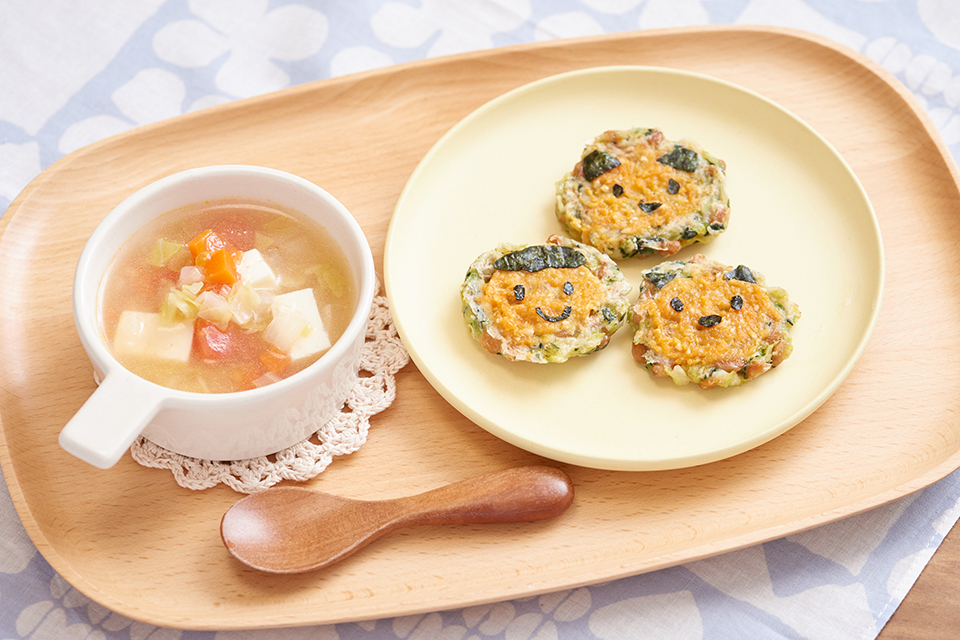

Children start eating solid foods at around six months old. The range of foods that they can eat expands as they grow, making preparing their meals more fun. On the other hand, children begin to develop a sense of self at this age. They may be extremely picky eaters or just play with their food without eating it. For that reason, parents often feel stressed out.
Registered dietitian and culinary expert Nakamura Miho has a message for moms and dads like that. “Don’t push yourself too hard to make your baby eat properly. Just enjoy your mealtimes together.” She adds, “It’s not so much a question of how much to feed your baby at one sitting as how much you all enjoy it. That’s what’s good for their growth in the long run.”
Enjoying mealtimes with your little one has many advantages. It lays the foundations for their mental and physical development. And it helps you stay healthy as an adult. Here, Miho provides tips on how to do it. She also shares some of her favorite baby food recipes.
Here’s Part 1:
Baby Food Can Be Fun: Enjoy Bites with Fermented Touches
Parents inevitably tend to focus on getting their child to eat. But not every child eats all their food without leaving anything. A fair number of children have small appetites or play with their food.
At times like that, let your child do what they like. Miho lists three techniques for helping enable your child to feed themselves while respecting their wishes.
Floors littered with food and baby clothes covered in sauce are enough to stress out anyone after a while. So make a virtue of necessity. Before starting mealtimes, create a space that’s okay to get messy.
“For starters, it’s important that your child uses their hands properly. Children go through a phase where they want to eat but still have trouble putting food in their mouth. Then eventually they learn to feed themselves. So give them plenty of time. Place a sheet under the table and chair before mealtimes, so if something gets spilt, you can easily wash it off. That alone will make you feel easier. And scheduling a bath after eating may help you stay cool, calm, and collected. You’re going to do the laundry after anyway, right, and you can always wash off any stains on your child’s face or body in the bath.”
If your child often drops or throws their food, it’s better not to serve everything at once. Serve it in small portions instead.
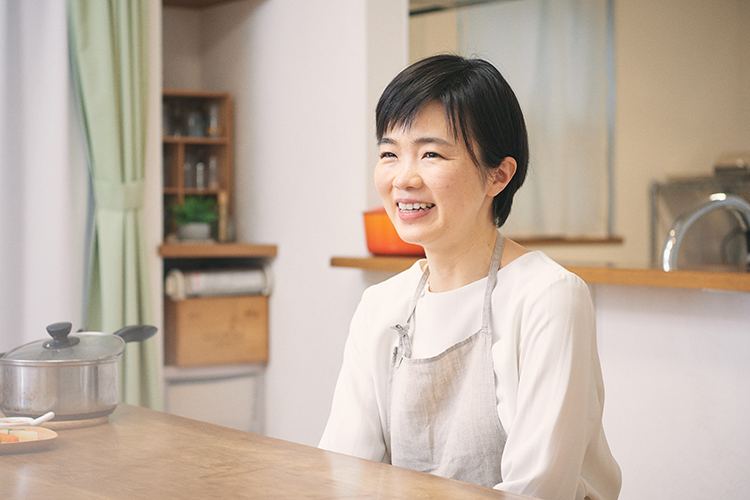
Registered dietitian and culinary expert Nakamura Miho
You may be so focused on getting your little one to eat that you often neglect your own meals or put them off until later.
“When your child sees you taking an interest in your food and enjoying it, they automatically become interested themselves. Children at this age are wary of foods they’re unfamiliar with. But if they observe mommy or daddy heartily eating it and saying how good it tastes, they’re reassured and start putting it in their mouth themselves. You should eat properly yourself to stay healthy. And enjoy mealtimes with you child as much as you can.”
To that end, it’s important to go about making meals as efficiently as possible. It’s a good idea to prep meals when you can without pushing yourself too hard. Here are a few tricks you can use.
<How to prep meals without pushing yourself too hard>
・When making a meal for the adults of the household, set aside some for your child while the taste is still mild.
・With ingredients like vegetables and meat that involve a lot of chopping, cook them together, then chop and freeze them.
・Stock up on things you can use straightaway such as commercially available frozen foods and baby food.
It’s the nature of parenthood to think you should feed your child three square meals a day. But even if the amount your child eats fluctuates somewhat, or occasionally they have almost nothing all day, the fact is, it won’t seriously affect their growth.
“It’s important not to get too hung up on the meal in front of you. Children, just like adults, have their food preferences, and there may be something they do or don’t feel like on a particular day. Trying to force them to eat something will only backfire. They may learn to eat it as they grow. And sometimes it makes life a bit easier just to tell yourself, ‘Well, not to worry’ and let it go.”
Still, if your child eats almost nothing for days on end and you’re concerned about their health, consult with a physician or specialist. Visit the pediatrician or access the nutritional counseling services in your community.
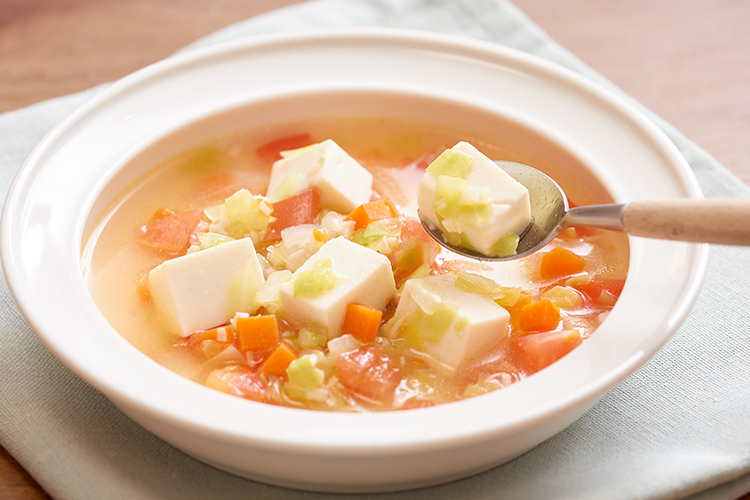
At the later stage of weaning, you can start using oils and seasonings containing table salt. It also becomes easier to set aside a portion of your own meal for your child. This minestrone made with miso allows you and your child to enjoy the same meal. Simply set aside your child’s portion first, then make the adult version by adding extra miso or seasoning it.

“Adapting a mild-tasting baby food into a dish for adults is an opportunity to take a fresh look at the sodium in what you eat,” says Miho.
“When you and your child can start eating the same things, it’s a good time to reexamine your own diet. As you nurture your child’s palate, it’s wise to get into the habit of eating less heavily flavored foods yourself for the sake of your own health. Try to regain your natural sense of taste.”
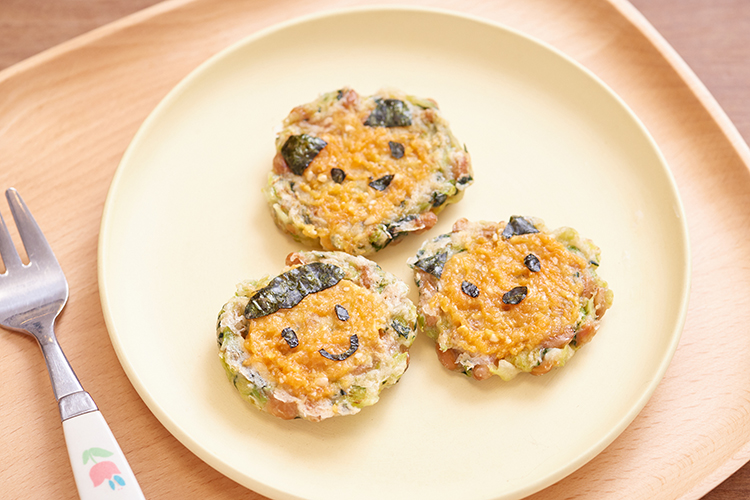
Eating at the same time as your child requires being creative. You need to get your child to feed themselves, in accordance with the principles of baby-led weaning (BLW) introduced in Part 1. Natto and vegetable oyaki buns are designed to do just that. Made with vegetables and natto, or fermented soybeans, these classic Japanese buns are packed with nutrition.
“These buns stimulate the appetite and are visually appealing too. They’re thinly coated in a sweet miso sauce made by simply mixing grated carrot and miso, then heating them. And they’re decorated on top with torn pieces of nori seaweed. I’d also recommend filling them with rice to make oyaki rice buns,” says Miho.
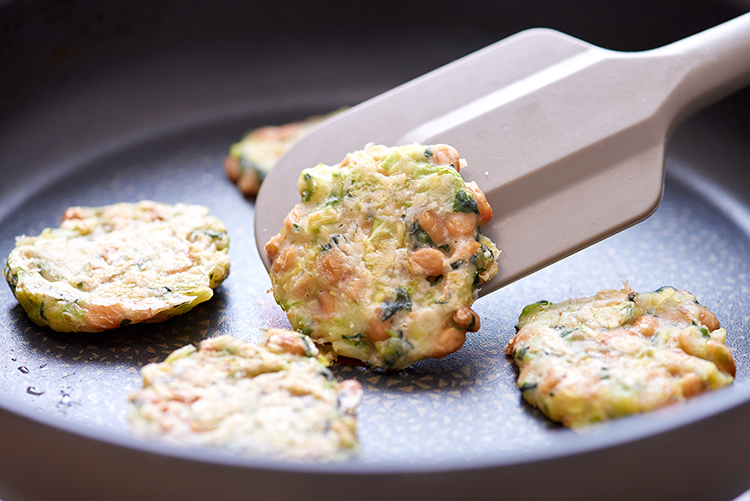
Sweet and salty tasting carrot miso is an all-purpose sauce for children at the baby and toddler food stages. It can be used for all sorts of dishes. It comes in handy whenever you want to add an extra twist to the flavor of a dish, so it’s worth remembering.
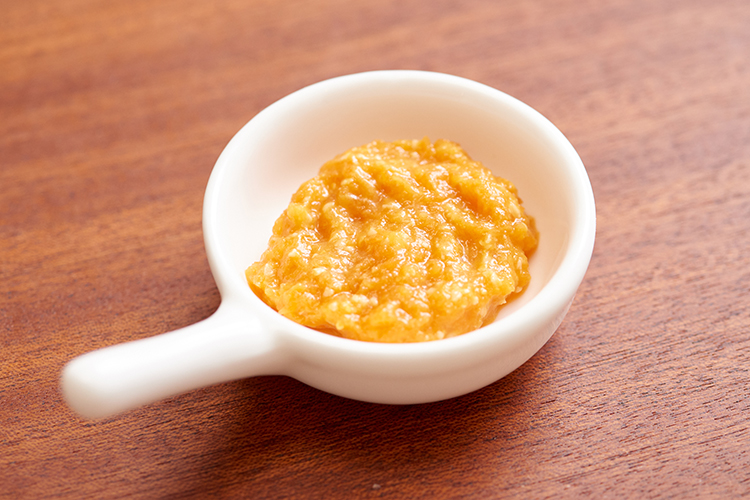
Carrot miso is highly versatile. Dip vegetable sticks in, use it to accentuate the flavor, or whatever.
“Oyaki buns are reassuring to have in your repertoire. They’re a source of both protein and vegetables in one, and they’re child-friendly to boot. You can make variations on them with whatever you have in the fridge, and adults can enjoy them too.”
When your child is weaning, it’s important to enjoy meals together while respecting how they feel. As long as you can meaningfully engage with them while taking it easy on yourself, mealtimes will lay the foundations for their future emotional development.
“You don’t have to push yourself too hard to be a good parent, a good mother or father. If you feel tired, relax and don’t overdo it. Turn to the people around you for help. It’s perfectly fine to use store-bought food on some days so you don’t stretch yourself too thin. Be sure to treasure the time you spend with your child at the dinner table, so they can learn to be independent and develop as an individual.”

As a dietitian at a preschool, Nakamura Miho prepared meals for babies and small children and taught about nutrition. She was also involved in community parenting support programs. Since striking out on her own in 2009, she has run her own cooking school and taught classes in making baby foods. Her motto is “making mealtimes more delicious and enjoyable.” Besides giving seminars on nutrition, she also supervises recipes for books, magazines, and television.